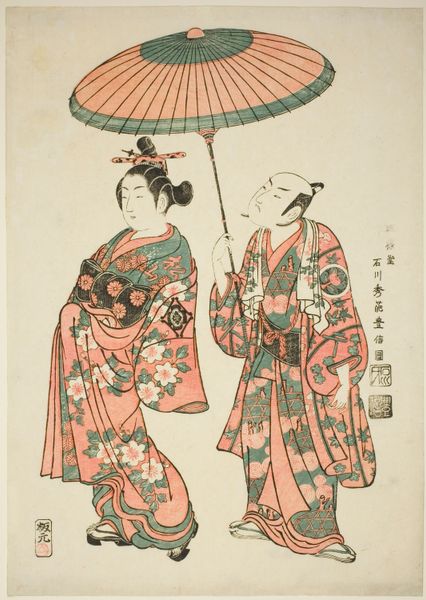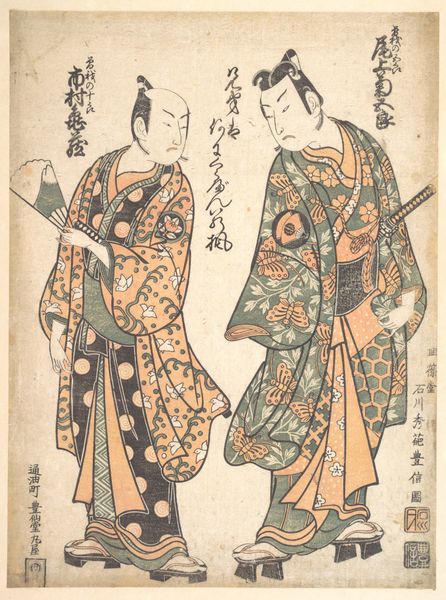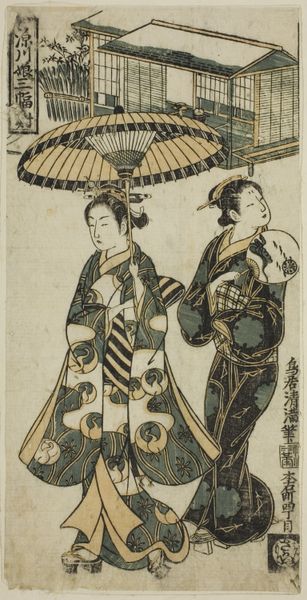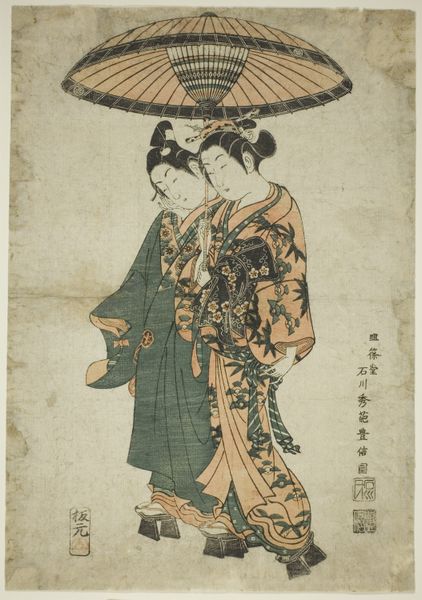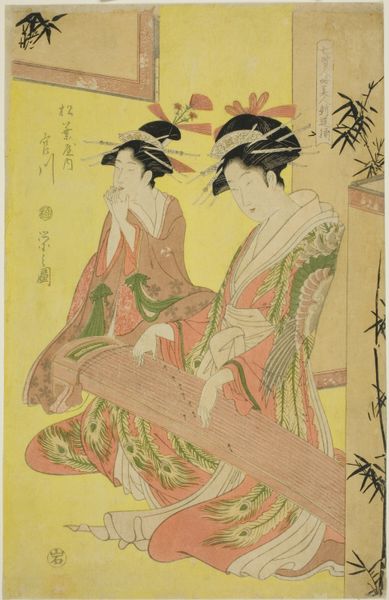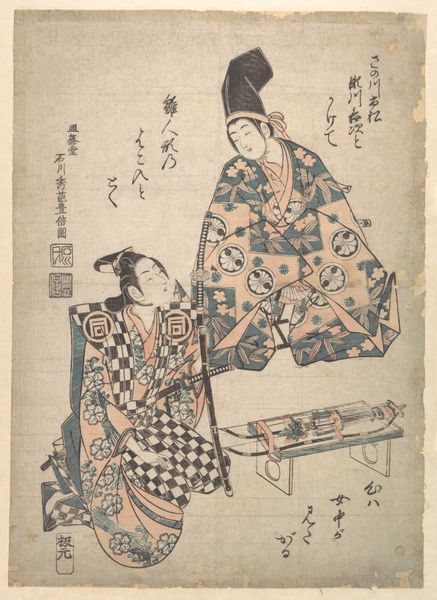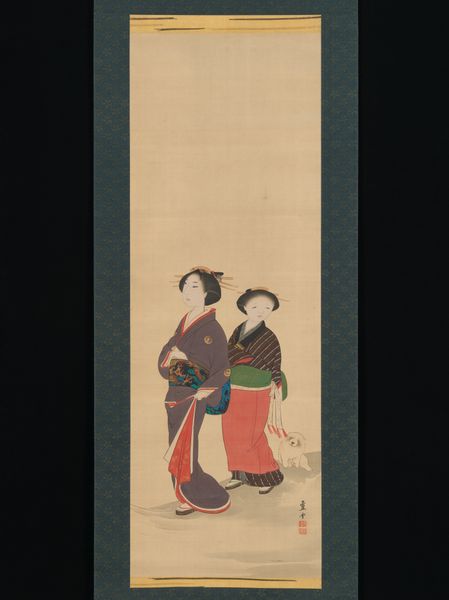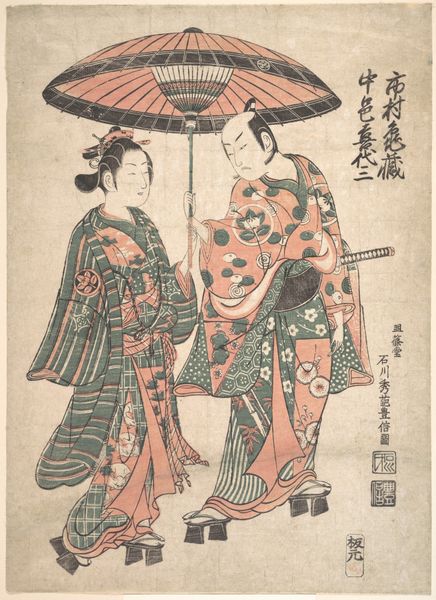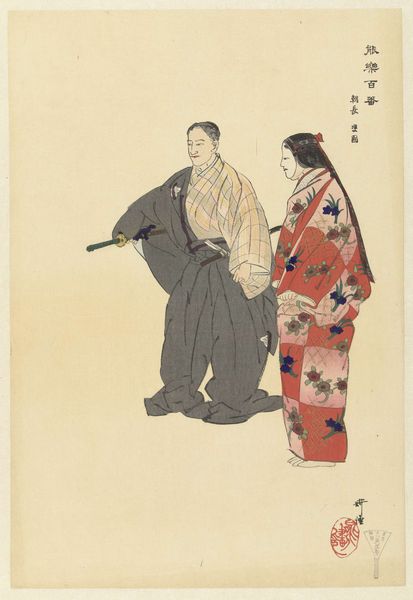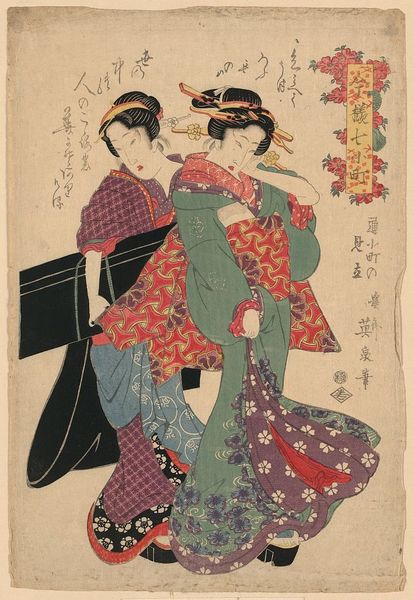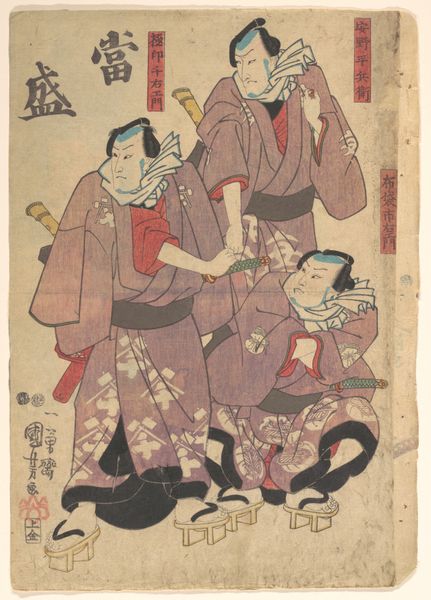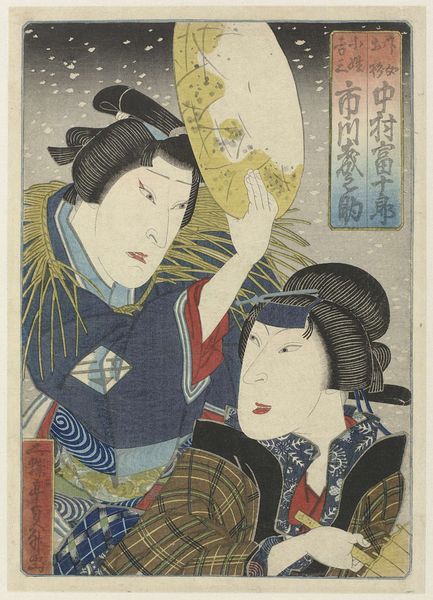
photography
#
portrait
#
asian-art
#
photography
Dimensions: image: 23.5 × 17 cm (9 1/4 × 6 11/16 in.) sheet: 25.4 × 20.5 cm (10 × 8 1/16 in.) mount: 49.5 × 34.8 cm (19 1/2 × 13 11/16 in.)
Copyright: National Gallery of Art: CC0 1.0
Curator: This is Felice Beato's 1868 hand-colored albumen print, "Young Lady and Servant". Note how the image, despite being a staged studio shot, manages to convey intimacy through its arrangement of figures. Editor: The first thing that strikes me is the interplay of geometric forms. The umbrella's radial symmetry contrasts so powerfully with the vertical linearity of the kimonos. It’s an organized composition but with curious textural dynamics, right? Curator: Precisely. And consider the umbrella itself, beyond just shape. As a symbol, it offers not just protection from the elements, but also suggests a shielding of privacy, or even status. The servant holding it reinforces a power dynamic subtly embedded in the image. Editor: And the colors! The hand-coloring process really enriches the tonal range here, moving past grayscale into this beautiful muted palette of blues, purples, and greens. There’s an attempt at realism, certainly, but heightened through artistry. Look at the way that violet edging in the lead figure mirrors violet tones of her servant's dress. Curator: Note, too, how these hues echo contemporary Western interests. Japonisme, at the time, embraced a vision of an exotic East, but even the photograph becomes a carrier of culture. The two women, posed as they are, both participate in and challenge assumptions that viewers may bring to the image. Editor: I'm compelled by the flatness inherent to the photographic medium—a plane that still somehow allows Beato to generate depth. He achieves it mostly through shadowing and subtle shifts in coloration. Even the soft-focus aesthetic reinforces that sense of receding space. Curator: Seeing it this way helps us remember how powerful visual vocabularies can be in preserving memories. The details embedded in objects such as parasols, robes, and hairstyles transcend surface value, pointing towards individual stories, but equally, reflect the narrative of an entire era. Editor: Indeed. And seeing it, framed like this, reminds me of photography’s early aspiration not just to reproduce reality, but to rival painting in aesthetic achievement. This piece makes that clear, demonstrating ambition both formally and culturally.
Comments
No comments
Be the first to comment and join the conversation on the ultimate creative platform.
